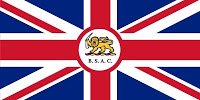 In 1889, The British South Africa Company (BSAC) received a charter granting it the right to administer the territories between the Limpopo River and Lake Tanganyika in south-east Africa. The southern part of these territories was originally called South Zambezia, but in 1901 it became known as Southern Rhodesia – named after Cecil Rhodes, who founded the BSAC. By that time the colony was governed by the Southern Rhodesian Legislative Council, which initially consisted of four elected delegates and five nominees of the BSAC.
In 1889, The British South Africa Company (BSAC) received a charter granting it the right to administer the territories between the Limpopo River and Lake Tanganyika in south-east Africa. The southern part of these territories was originally called South Zambezia, but in 1901 it became known as Southern Rhodesia – named after Cecil Rhodes, who founded the BSAC. By that time the colony was governed by the Southern Rhodesian Legislative Council, which initially consisted of four elected delegates and five nominees of the BSAC.
Over the years the Council grew, with increased democratic representation. The Council of 1920, included six BSAC nominees and thirteen elected members, the majority of which were part of the Responsible Government Association (RGA). The RGA wanted autonomous government for the colony within the British Empire, forming an alliance with the Labour Party to oppose one group which proposed that Southern Rhodesia become part of the Union of South Africa, and another group which wanted continued government by the BSAC.
The following year, a British Commission reported that the colony was prepared for responsible government, and that the electorate should decide whether Southern Rhodesia have their its own government or become part of the Union of South Africa. Even though the British government, the BSAC, and the South African government all favoured union, when the referendum was held on 27th October 1922, 59.4% of the votes supported responsible government, with a turnout of 78.5%. The following year, BSAC control of the colony ceased and in April 1924, the first elections were held for the Southern Rhodesian Legislative Assembly.


